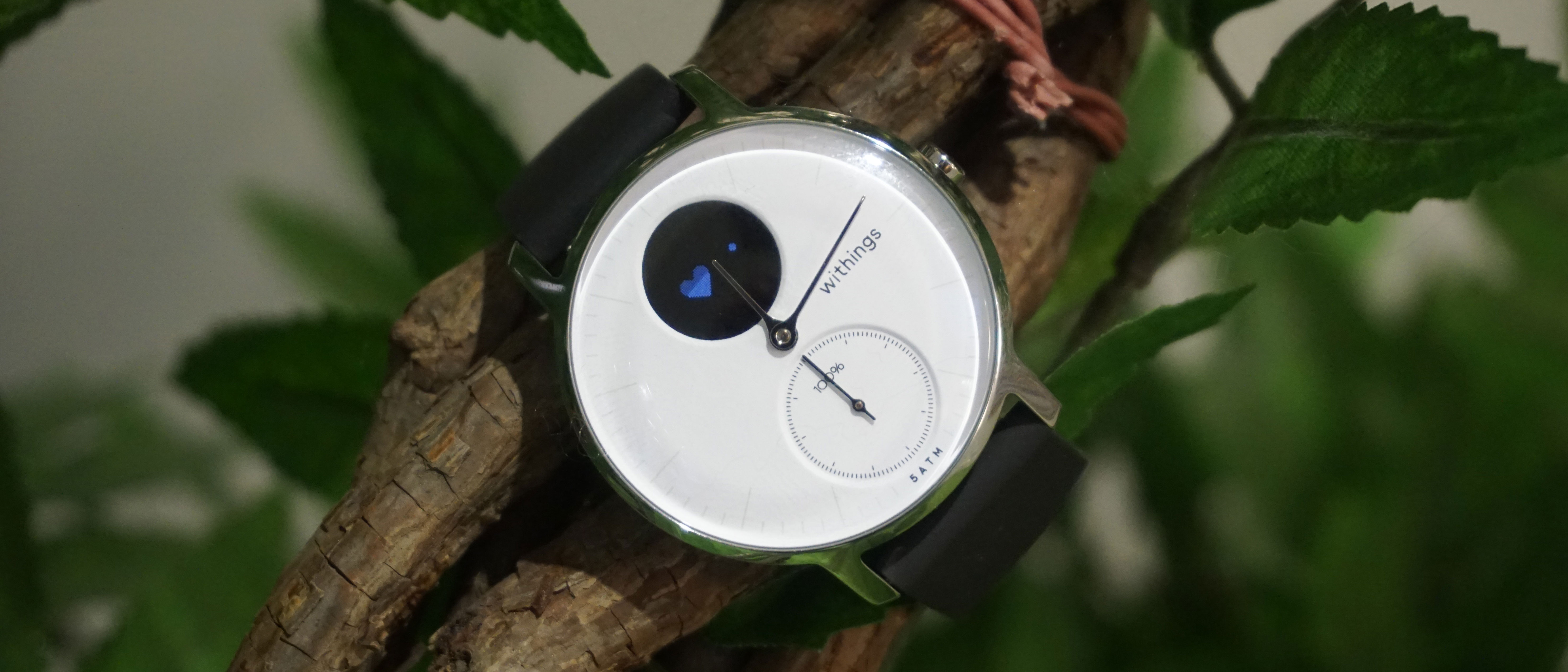Why you can trust TechRadar
Specs, performance and fitness
- Limited fitness features compared to some other fitness trackers
- Capable of tracking walks, runs and swimming
- Heart rate tracker allows for improved accuracy in fitness data
The Withings Steel HR won’t be able to do as much fitness tracking as a lot of other trackers on the market, but it will be able to keep a count of your daily steps and limited exercise routines.
We tried to use the Steel HR for a muscle building workout, for example, and it didn't monitor any of the results apart from the steps we took.
If you go for a walk or a run, though, it's more useful, as it will automatically begin tracking your steps. We found the step tracking to be accurate and it gave us very similar results to what we’ve seen from other devices over similar distances.
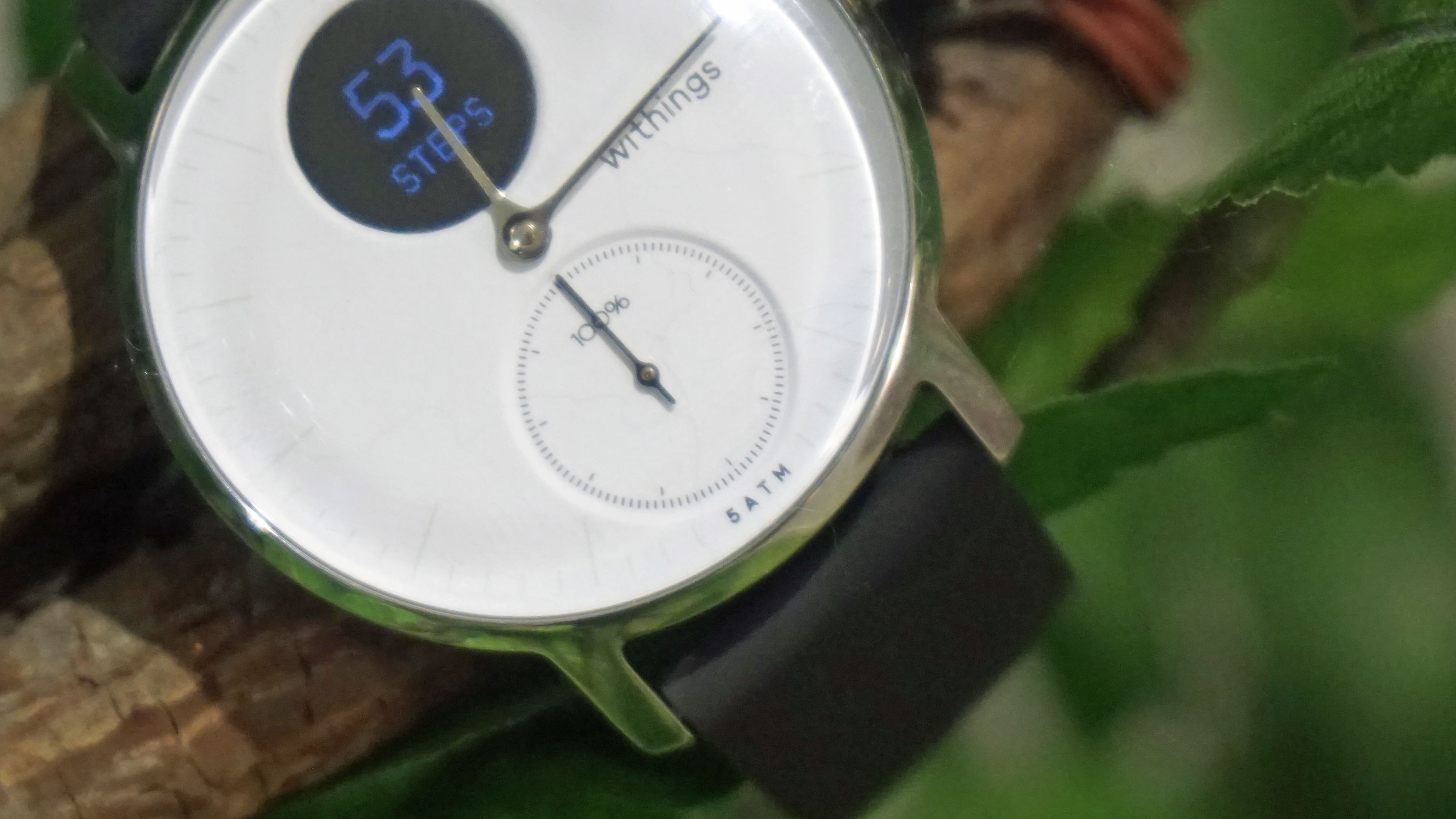
The big highlight of the Steel HR is the heart rate tracker on the back of the device. This sits against your wrist and will supply you with average results of your heart rate by taking it every half an hour.
It’ll also continuously monitor your heart rate when you're working out to identify how well you’re doing – all of that information is then available in the app.
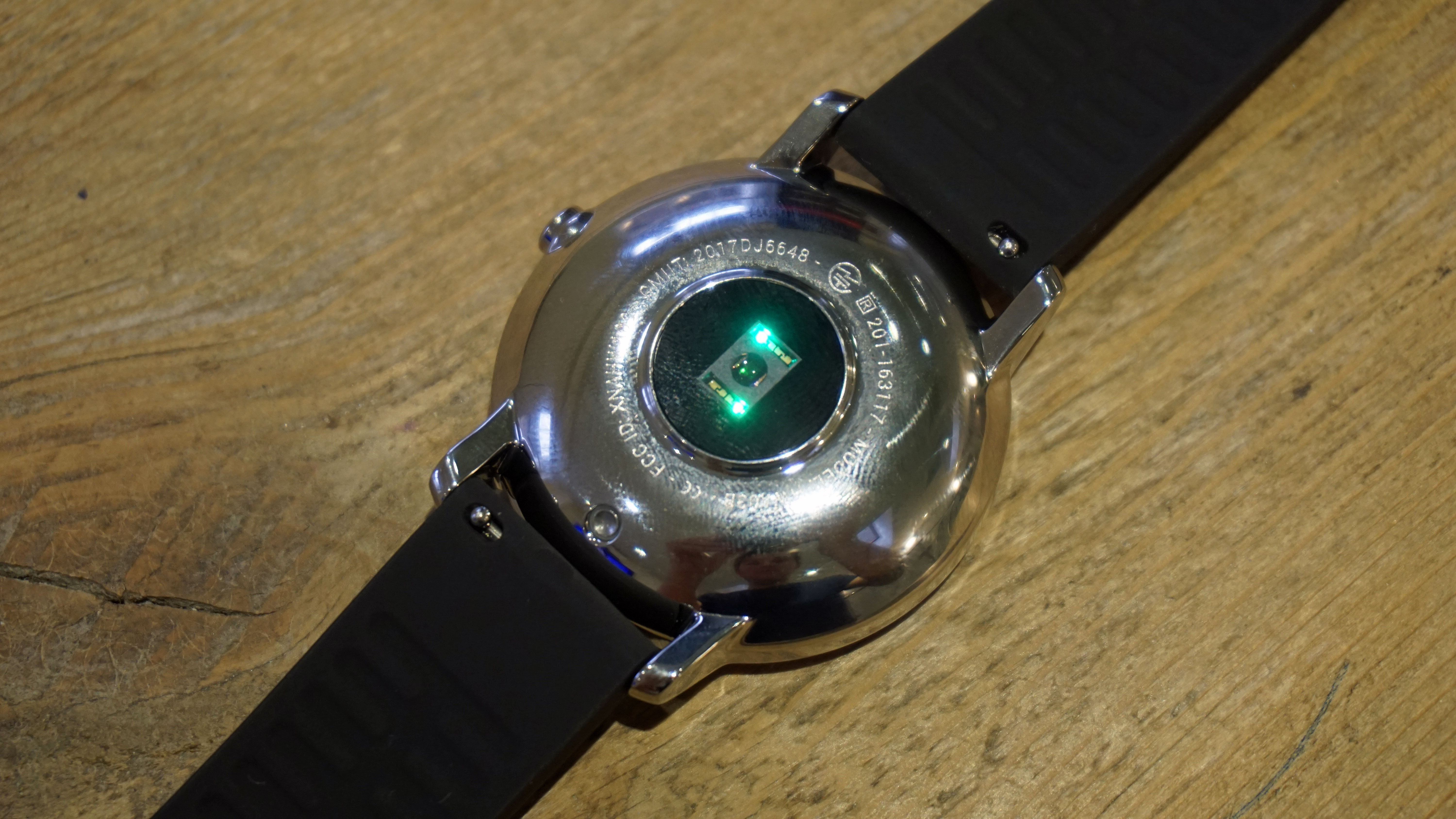
If you’re finding yourself with a particularly fast pulse you can also press the button on the side of the watch twice to be able to see your current heart rate.
We used this tech alongside other trackers and had very similar results, but you should never take this information as 100% accurate.
For the average run or long walk, this quality of heart rate tracking is good to have, but if you’re looking to workout a lot or professionally you may want to grab a proper dedicated heart rate tracker.
The Steel HR can also be taken in the pool, and it will automatically track your swimming and give you a result of the lengths you've done within the app. We haven’t had the chance to try out this feature, but we’ll be sure to update this review when we’ve had a go in the pool.
There's also sleep tracking within the Steel HR, and the battery life on the watch allows you to wear it to bed without having to charge it each evening.
This will monitor how well you've slept by taking your heart rate and knowing how much you've moved around in your sleep. It's not the most comfortable device to wear at night, but it seemed accurate in monitoring how well we'd slept.
There's also an alarm function that allows you to wake up slowly with gentle vibrations on your wrist. It means you won't need an alarm clock to wake up, but the vibrations may not be strong enough if you're a heavy sleeper.
App and compatibility
- Easy to use app that will provide you with most stats you'll want to see
- Works with a variety of iPhone and Android devices - check below to see if it works with your phone
The Withings Health Mate app is one of the most useful on the market if you’re looking for something easy to use and a simple interface to read all of your stats from.
This isn’t designed for anyone who wants lots of fitness features, but it displays your steps, sleep and heart rate details in a beautiful interface that’s easy to navigate around.
Each time you open the app, you’ll be greeted with the Timeline section that kicks off with the steps you’ve taken, how close you are to your goal for the day and other stats such as your weight or average heart rate.
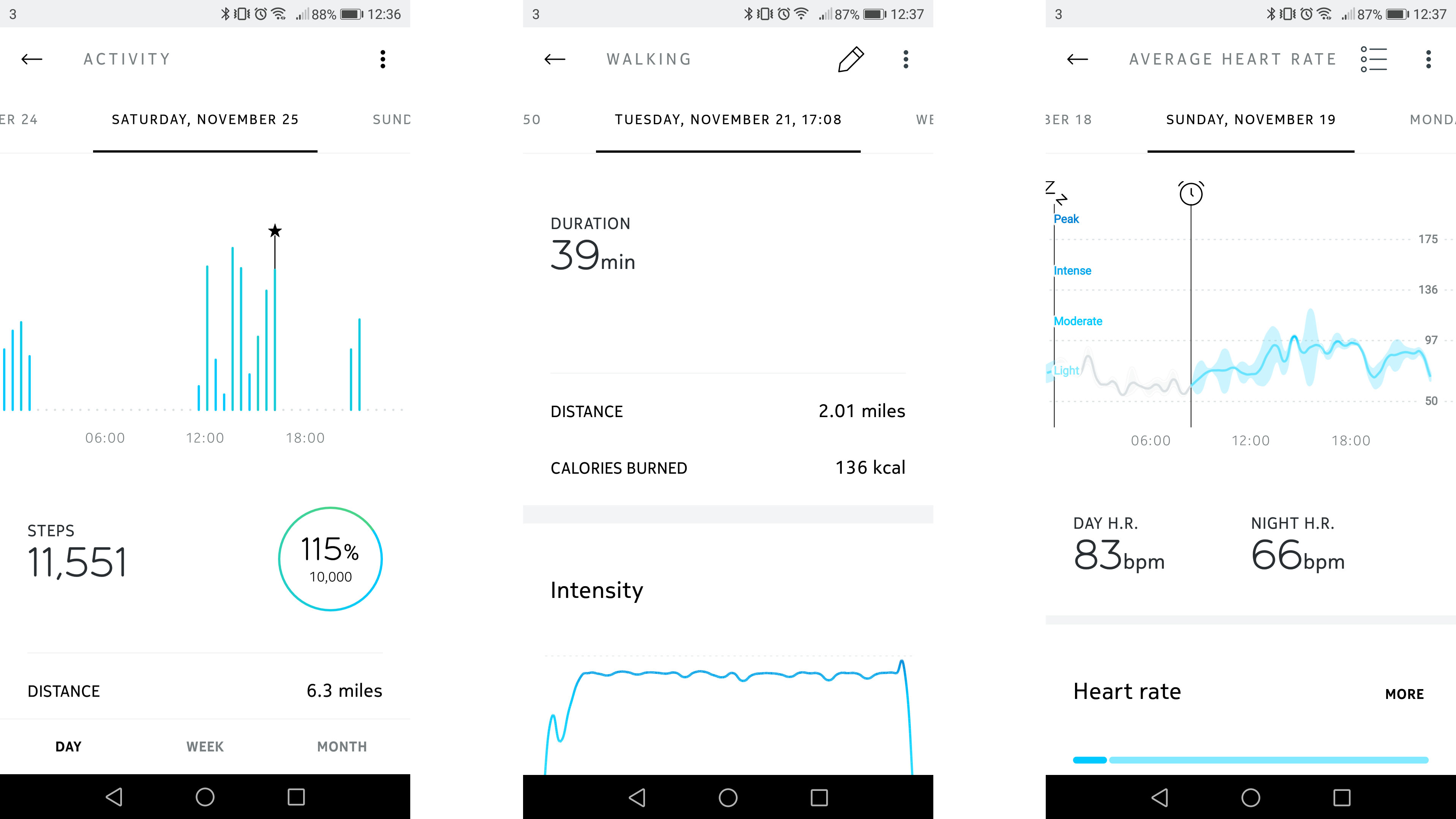
It’ll then follow with your key stats from the last few days on different tabs. If you press on these, it’ll take you to another menu to view a few other stats and full information on each one.
If you’ve been on a particularly long and strenuous walk, it will appear here so you can see your activity at a glance.
Under heart rate, your stats are taken every half an hour by default, so it will give you a useful graph to see where your beats were highest and whether there’s any particular part of the day that’s particularly intense.
If you have an iOS or Android phone released in the last two years, you should be able to pair the Withings Steel HR with your device.
If it’s an iPhone, you’ll need it to be running iOS 8 software or higher, while Android devices will work with devices sporting Android 6 Marshmallow or higher.
There are a few Android phone exceptions, which you'll be able to find here on the Withing's website to triple check your phone will be compatible. There’s no support for Windows Phone devices or anything from BlackBerry.
Battery life
- Lasts for over a month on a single charge
- Not as great battery life as the Withings Go or Moov Now trackers
- Quick to recharge and no need to buy watch batteries
Only powering a small digital screen and watch hands is a very useful feature of the Withings Steel HR, as it means it can offer great battery life compared to some other wearables.
When you put the battery life on the Steel HR next to the results you’ll see from the Activité Pop or Go though, this isn’t as impressive. Withings predicts the Steel HR will last you 25 days and we found it offered a similar amount of charge.
It will depend on how much you're using the heart rate features, but we found we could get just over a month of use out of a single charge.
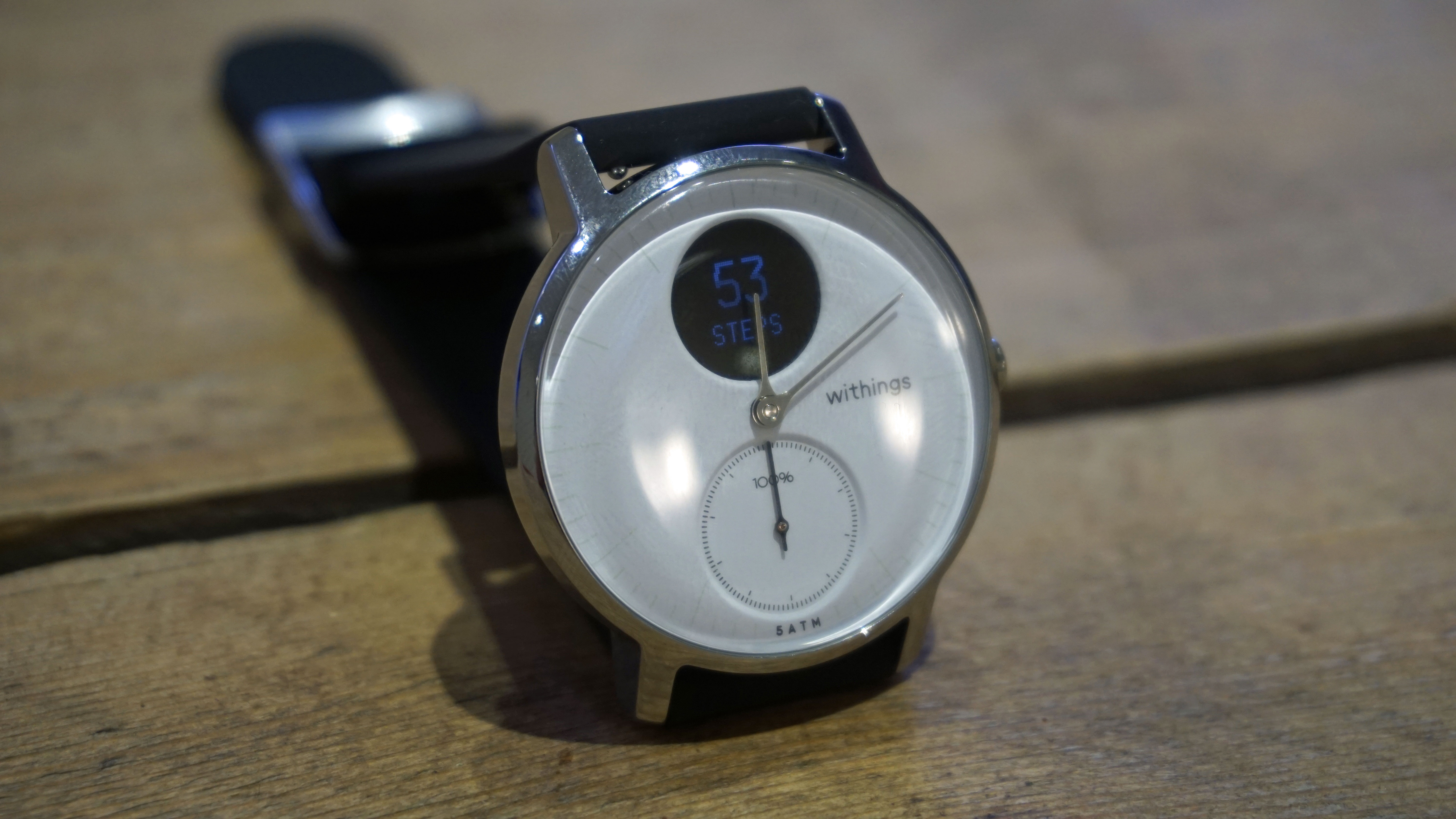
If you sit that next to the Fitbit Charge 2, which lasts for just three or four days, you will be quite impressed, but it doesn’t match the six month plus results of say the Moov Now or even the Withings Go.
It’s much easier to recharge the Steel HR compared to other watches we originally saw from Withings as it doesn’t run off a traditional watch battery. Instead there’s a charging pad in the box of the Steel HR, so you can just plug it in.
The charging pad in the box can be quite irritating though, as the watch is prone to slipping off during a recharge, so you will need to keep an eye on it.
In terms of recharging time, you’ll find the Steel HR will go from zero to 100% in a little over an hour or so. It’s really quick considering that charge will get you through more or less a full month.
Image Credit: TechRadar
Current page: What’s it like to use?
Prev Page Introduction, price and design Next Page Verdict and competitionJames is the Editor-in-Chief at Android Police. Previously, he was Senior Phones Editor for TechRadar, and he has covered smartphones and the mobile space for the best part of a decade bringing you news on all the big announcements from top manufacturers making mobile phones and other portable gadgets. James is often testing out and reviewing the latest and greatest mobile phones, smartwatches, tablets, virtual reality headsets, fitness trackers and more. He once fell over.
